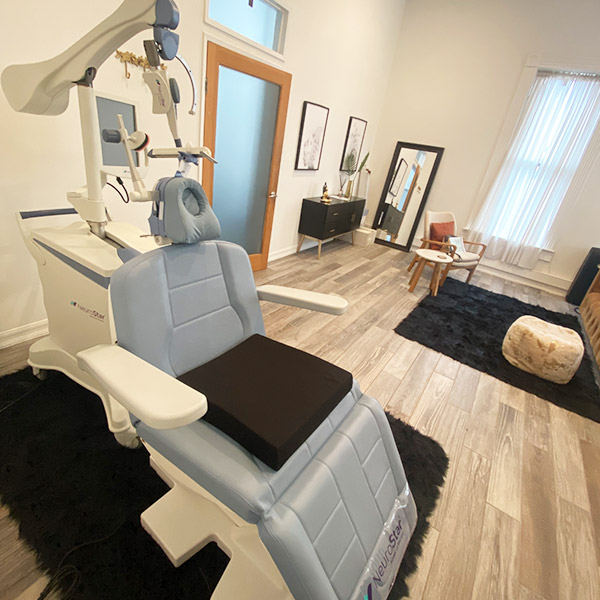Untrue Myths About TMS Therapy
We all know that depression isn’t a mentally fun place to be. Clinical depression generally limits the functionality of the depressed individual, and in extreme cases, forces them to cease functioning altogether. This is the burden of a significant depressive disorder requiring treatment through medication and therapies.
Most people respond to front-line treatments (medication & psychotherapy). Some folks find a combination of both effective. But there is a small group suffering from depression resistant to both.

TMS therapy is, for many, the last line of defense against depression, the last hope to function like a normal human being. But since this type of therapy is not as generally utilized as medications, there is a knowledge gap among the public about this type of treatment, leading to various myths and rumors surrounding TMS treatment.
Public opinion affects the choices we make, whether we’re conscious of it or not. If stigma surrounds a specific kind of treatment, we’re less likely to opt for it even when all other treatments have failed miserably, and it’s our only hope. Hence, the question arises: what’s TMS therapy, and what are some untrue myths surrounding it?
What’s TMS Therapy
TMS stands for Transcranial Magnetic Stimulation. The name is somewhat self-explanatory. A specific part of the brain is chosen, and with the assistance of electric waves, the nerve cells in that region of the brain are stimulated.
The procedure has been approved by the FDA not only for drug-resistant depression but also for other mental illnesses such as OCD. TMS is quite safe and usually has very few side effects (if any), but it’s performed strictly after approval by a professional physician.
Not all cases require multiple TMS treatment sessions. However, in almost all cases of depression, it does require several visits to the doctor. Before the procedure, you have to remove all metal objects (jewelry, watch, etc.). Next, you’ll be seated in a comfy chair to make sure the procedure is as comfortable as possible. In your first session, some measurements have to be made (of your head) to determine where the magnetic coil will be placed.
Why Undergo TMS Treatment
TMS treatment is never the initial option for any mental issue. But it’s a relatively safe choice because most studies reveal few side effects, if any. Mental illnesses include but aren't limited to major depressive disorder, obsessive-compulsive disorder, and anxiety. The treatment is also known to have positive results for other diseases such as Parkinson’s disease. It’s also utilized for research purposes (helps with diagnosis of past neurological injuries).
TMS isn't a standard procedure for everyone. The steps are similar, but the specific part of the brain has to be targeted, and the equipment settings are personalized depending on the patient and their particulars.
10 Common Misconceptions About TMS Therapy
When we hear about a topic for the first time, we immediately try to think of something similar to understand it more thoroughly. The words “brain” and “electric'' provoke negative responses when used in the same sentence. This might be because of the horrible history behind such procedures we’ve all heard about. For whatever reason, the public is ill-informed about this subject, and inside this information gap lies some very nasty lies and myths that should be addressed.
It’s Invasive
Some folks erroneously believe this type of treatment is comparable to lobotomy. Even though invasive procedures are often quite safe (most surgeries), it can be stated unequivocally that this procedure is noninvasive by definition. No incision, cut, etc., is made on the skull. The equipment is simply placed on the scalp near the forehead, and the electrical waves emanate from there.
It’s Painful
Simply put, the procedure is painless. There are, of course, other sensations one may experience throughout the procedure, but none are painful if the procedure is performed correctly. One may hear clicking sounds throughout the procedure (normal). In most cases, the TMS technician places earplugs/headphones over the ears to protect from the clicking sound.
It Has Dangerous Side Effects
TMS treatment isn’t for everybody, but for the most part, it has few side effects, and many disappear a short while after the procedure. Like any other form of medicine/therapy, the benefits come with a catch. It’s just a matter of whether the pros outweigh the cons. But the side effects are rarely dangerous, especially now, with the procedure’s much higher standards.
It Makes You Unable to Function For a While
The procedure is so harmless that in most cases, the patient can leave right after, drive home and return to their normal/routine activities. The procedure doesn’t use general anesthesia, and the patient is awake and conscious throughout the process (lasting approx. 30-60 minutes).
It’s Experimental
Indeed, TMS therapy is still evolving, and many studies and meta-analyses are being done on the subject as we speak. But it is well past the experimental phase. Being approved by the FDA is a sign they trust the procedure (and so should we).
As far as results, it’s worth noting that this form of treatment is only used on patients resistant to medication and psychotherapy in most cases. Consequently, the success rate still counts (even if tiny). Luckily, it’s anything but, and studies suggest the success rate ranges between 30-64%.
It’s the Same as ECT
Even though the procedures appear alike (due to electric stimulation), they are, in fact, very different. Electroconvulsive therapy is an invasive procedure that can cause significant side effects compared to TMS therapy.
ECT is to blame for most of the stigma surrounding TMS therapy. ECT was first developed in the 1930s and became widely used for treating mental issues. But ultimately, the procedure was overused, resulting in serious side effects, hence a major backlash in the 1970s. Since then, there’s been a stigma around any procedures remotely similar to ECT.
It’s Not Covered By Insurance
This is not true in most cases. Nowadays, most major insurance/health plans cover mental disorder treatments, including major depression. Hence, TMS treatment is most likely available in your healthcare plan if you require it.
There may, of course, be some preconditions for your insurance to cover TMS therapy. For example, you may need to prove you have an adverse reaction to antidepressants (by taking them for a while) before they assent to paying for TMS treatment.
It’s Worse Than Medication
Maybe because we use medication much more than we shock our brains, we’ve gotten used to it. We swallow pills all the time, even though some of them have significant side effects. Although TMS therapy is used after the patient displays symptoms even after taking medication, the procedure has fewer side effects than most medications.
It’s a One Time Thing
The procedure usually requires several visits for about six weeks, five days a week. If it’s successful, there’s no guarantee the patient won’t need it again in the future. In the case of future relapses into depression, the patient might have to undergo the procedure multiple times.
TMS Therapy Is Only For Adults
The procedure itself is not approved by the FDA for patients ranging between the ages of 12-22. However, studies have revealed TMS treatment has been beneficial to adolescents non-responsive to medications and other forms of depression therapy. Of course, TMS shouldn’t be used for those with metal objects (such as electrodes) in their brains.
Is It Worth It
Yes, it’s completely worth it! The side effects are temporary or non-existent, and the potential upside is enormous if you or someone you know suffers from a very stubborn case of depression. Anybody who has been depressed knows what it’s like to get your life back from the clutches of depression. So there’s no time to lose.
Just like any other mental illness, the available treatments are surrounded by stigma. The solution to this is educating and informing people about what the disorder is and what the treatment entails. Many individuals who need treatment don’t go through with it just because of the opposing views.
Bottomline
Treatments and medications without serious side effects are viable options, and folks should just get the scary image of getting an electrical shock out of their head. But sometimes, it’s just better to talk to an expert in the flesh to fully trust what’s going on.
Like any other procedure, patients want to be well informed before committing. That’s why when you visit the Los Angeles Therapy Institute, our team of experts is always ready to answer any questions you have about TMS therapy. They’ll tell you exactly what you need and walk you through the procedure accordingly. For more information on TMS treatment, contact our team.


